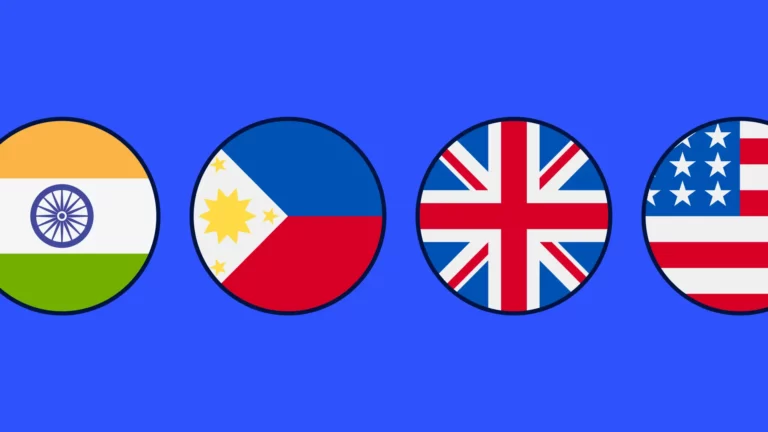People aren’t just the most critical element of a successful, prosperous organization—they are the organization.
In most modern organizations, people go far beyond being just employees to become representatives of the organization’s mission, vision, ethos, and beliefs. They form both the cerebral and emotional core of what the organization represents to the outside world and create the most important thing within it—its culture.
Top-level organizations must possess a thorough, comprehensive understanding of their workforce—their goals, aspirations, ambitions, attitudes, and what makes them best suited for their roles.
But people are diverse and complex, and they usually come from different backgrounds and psychological makeups. This makes the task more challenging than it first seems.
Each person is important, but each person is also different. That’s why you need a system beyond traditional HR practices to understand them. And that’s even more true in the age of the ‘global workforce’!
This is what makes people analytics a powerful tool for leaders and decision-makers alike.
What is people analytics?
In simple terms, people analytics is the process through which organizations leverage data to better understand their employees and improve business performance.
According to McKinsey, over 70% of company executives cite employee data analysis as a top priority within their organizational framework.
People analytics (also known as ‘HR analytics’) has been at the forefront of modern workplaces and an important point of discussion when it comes to a global workforce.
Organizations have been upfront in leveraging data to draw insights from their diverse and expanding employee base. This is especially important given the fast-paced, highly competitive modern business landscape.
Organizations use people analytics to derive important, actionable insights into various aspects of their workforce. These insights can then be leveraged to make high-quality, informed decisions that benefit the individuals both in the long and short term.
What are the most essential aspects of people analytics?
Before going ahead and establishing a people analytics strategy, you must establish some key metrics across your diverse workforce—to give leaders, decision-makers, and HR a comprehensive and easily accessible overview of their employees.
Overall hiring time
What is the average time the organization takes to hire or onboard an employee? That is, how long does it take from the date of the position being offered to the employee being fully onboarded?
This metric can help identify efficiency gaps in the hiring or interview processes. It helps eliminate wasted time and manpower to make hiring smoother and less stressful.
Total employee tenure and labor turnover
Employee tenure is calculated as the total time employees decide to stay with the organization. Labor turnover, on the other hand, is calculated as the ratio of existing employees to the number of total employees within a specific period.
By tracking these metrics, you get a number to represent your organization’s ability to retain employees. Calculating and closely examining both metrics can help reveal information about how healthy the relationship is between the organization and the employee.
Employee absence rate
Efficient, healthy organizations usually don’t have high levels of absenteeism. But this can sometimes be triggered by a poor work environment. Ideally, the absence rate should be between 1% and 2%. Higher absenteeism rates can be alarming for top organizations.
So it’s important to identify such problems early and ensure that the environment remains healthy for employees to turn up at work regularly and happily.
Revenue per employee
This metric is obtained by dividing overall generated revenue by the total number of employees. It acts as a measure of the overall efficiency of your workforce in terms of revenue generated and can also indicate the quality quotient of the workforce. Based on this metric, you can align or realign tasks in terms of quality of work and priority.
Rewards and promotions
Rewarding regular and consistent employee performance with incentives and promotions is directly tied to employee performance and motivation. So is tracking overtime pay, incentives for good performances for new hires, etc. Maintaining consistency throughout will inspire trust and commitment in employees.
Diversity quotient
An important aspect of a global workforce is a high diversity quotient. Workplaces thrive on being a springboard for diverse talent, backgrounds, genders, and ethnicities. A diverse team also adds more to the overall pool of creativity and talent within the organization.
So it’s important to remove all biases and misunderstandings from the workplace and maintain an empathetic, toxicity-free environment.
What do you understand from these metrics?
These actionable metrics help paint a broader, overall picture of the work culture itself. Leaders can use these to zero in on issues and ask some critical questions:
How happy are your employees?
Low turnover and absenteeism rates indicate a general sense of satisfaction in the workplace. If employees are staying for longer and are willingly taking more initiative, this is a massive step forward in terms of your organizational culture.
How efficient is your overall organization?
A strong work culture means that employees always have a high level of motivation and feel internally driven to do their best work. The organization needs to have a strong level of internal consistency and productivity. This happens automatically when the employees are fully in tune with their employers.
How diverse is the organization in terms of skills and development?
With a global workforce, fixed mindsets never work. An organization cannot be considered diverse unless this diversity shines through in skillsets, mindsets, perspectives, attitudes, work ethic, and personal psychology.
A strong culture usually employs people who are open and collaborative and feel a strong sense of pride in their work.
Best practices: Implementing people analytics
It’s important to evaluate all perspectives from your dataset before considering concrete, action-oriented steps. Once you have the whole view, you’re all set to add value to your existing processes or help evolve them to prepare for future growth and challenges.
Here are some critical steps to implement for a successful people analytics strategy:
- Build clear and defined objectives: Clearly define and identify the strategic goals and objectives of your organization and then identify the crucial HR metrics and practices that align with them. Only by connection the two, you can build a better roadmap.
- Consider data to be your best ally: Data is here to stay. So organizations need teams that are highly proficient with data operations. Upskill more people in data analysis, especially in culture-centric departments like human resources. Also, consider using the latest data storage capabilities.
- Choose the right tools: Understand the key areas that require the most work, analyze the budget, and then decide on the digital tools that your organization really needs.
- Be actionable: While obtaining insights from data is important, putting the insights into action is critical. Encourage data-driven decision-making. Be confident and lead from the front to improve the existing processes within the organization.
- Build a feedback loop: Implementing people analytics is an iterative process. It continues to improve and evolve. But it’s also important to remember the people themselves. Regular inform and update your employees on new processes and innovations to build a sense of openness and organizational transparency.
How does people analytics give your organization a strategic advantage?
Little things go a long way when it comes to people analytics. The process gives an organization tangible, quantifiable benefits and adds positive value to it. This, in turn, manifests in long-term benefits that make the organization stronger, more efficient, and more resilient.
The ‘State of People Analytics 2023-24’ research report by HR.com included a survey conducted on industry professionals, business leaders, and consultants across various sectors regarding people analytics. It highlighted some important facts and figures.
- 57% of participants agreed that people analytics strategically benefited their organizations
- 49% of participants agreed that people analytics played a critical role in recruitment and selection
- Employers were five times more likely to integrate HR data with business and non-HR data overall. They were also twice as likely to appoint a designated head of business analytics
These figures symbolize how organizations are now more comfortable with the added credibility that employee data analysis provides.
People analytics helps organizations grab a strong foothold in:
Strategic workforce planning
Proper HR and people analytics procedures can help organizations in strategic workforce management and manage a large and diverse workforce across multiple locations.
This helps leaders identify and predict future workforce needs, skill gaps, and potential areas of improvement. Now you have a better talent strategy and clear staffing objectives, and can easily mitigate talent exodus and surpluses.
Optimizing recruitment and employee retention
Needless to say, recruitment and employee retention play a large role in people-centric operations. People analytics can help companies streamline and optimize their recruitment processes, not only to identify and attract key talent but to retain them over the long term.
With people analytics, you can develop successful hiring strategies by predicting candidate success based on historical data and KPIs. Now you can identify the best possible candidates and make better decisions.
Improving employee engagement
A great culture is a prerequisite for an organization’s success. High levels of performance are directly tied to employee happiness and motivation. Through analytics, organizations can successfully measure and keep track of employee engagement levels and identify the factors that influence them. They can also identify top performers and unique talent within and reward them justifiably. All of this can go a long way toward keeping the morale high and helping employee development.
Leveraging the power of diversity
People analytics can help organizations keep track of diversity metrics, monitor diversity initiatives, identify areas of improvement, and develop future diversity programs and initiatives.
Organizations can promote inclusivity and address unconscious biases within their culture by leveraging data insights and making employees part of the process.
Managing and mitigating risk
Large, global organizations are always under increased scrutiny and regulatory requirements when it comes to their HR practices.
By leveraging people analytics, you can identify compliance risks, monitor overall workplace compliance with the latest policies and regulations, and ensure that all processes adhere to critical legal requirements. You can also proactively address prospective compliance issues and mitigate risks before they arise.
Get ahead of the curve with Multiplier
Want to make your organization the best in class in terms of people and culture?
It involves a lot more than just hiring the right people. You’ve got to make sure that your processes, systems, and strategies are well-suited to getting the best out of them as well.
Multiplier’s EOR platform not only helps organizations manage their global, diverse workforce; its integrative, cross-functional capacities help them understand their employees better. It complements an organization’s inherent people analytics framework and makes it stronger.
Be compliant with the latest labor and tax laws, and get to know the ins and outs of your workforce like never before.
Speak to a Multiplier Expert today!







